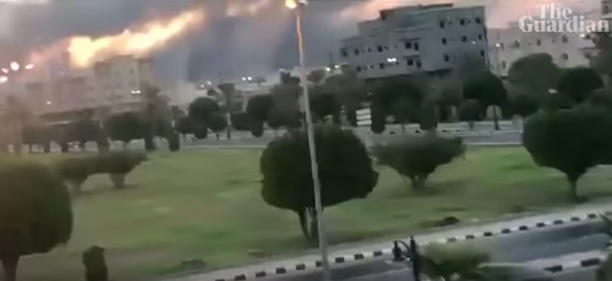The UK newspaper, the Guardian, published a report which highlights the constrained Saudi abilities in face of future attacks, detailing various aspects of Aramco incident.
Saudi Arabia’s state-of-the-art missile defense systems could do nothing to stop the swarm of drones and cruise missiles that struck some of its most important oil infrastructure at the weekend, according to the report which added that they were designed to deal with different threats – and they were looking in the wrong direction.
“The audacious strike against the Abqaiq petroleum processing facilities and Khurais oil field on Saturday morning – which the Saudis say was “unquestionably sponsored by Iran” – has exposed the limits of the defenses of the world’s largest military spender per capita.”
“The kingdom’s ability to ward off any future attacks is also constrained, analysts said, and depends heavily on Donald Trump’s willingness to make a deal with Iran.”
“At least four shorter-range defense systems, designed to take out smaller targets, were also present around Abqaiq, according to satellite images. But they were either positioned at the wrong end of the facility or would have seen the tiny drones and missiles too late to shoot them down, said Michael Duitsman, a research associate at the Monterey-based Centre for Nonproliferation Studies.”
“This attack was something new, it was not something the Saudis were expecting to happen,” said Lamrani.
“The Saudi reaction was also hampered by the organization of its own forces, said Becca Wasser, a policy analyst at the Rand Corporation. Most US defense sales have gone to the Saudi military, but the country’s oil infrastructure falls under the responsibility of the interior ministry, which has traditionally focused on domestic threats. Meanwhile, separate air defenses are operated by the National Guard.”
“Other crucial Saudi infrastructure such as the plants which cleanse Saudi drinking water, and the long pipelines that carry them to major cities, also now look vulnerable.”
Source: The Guardian




